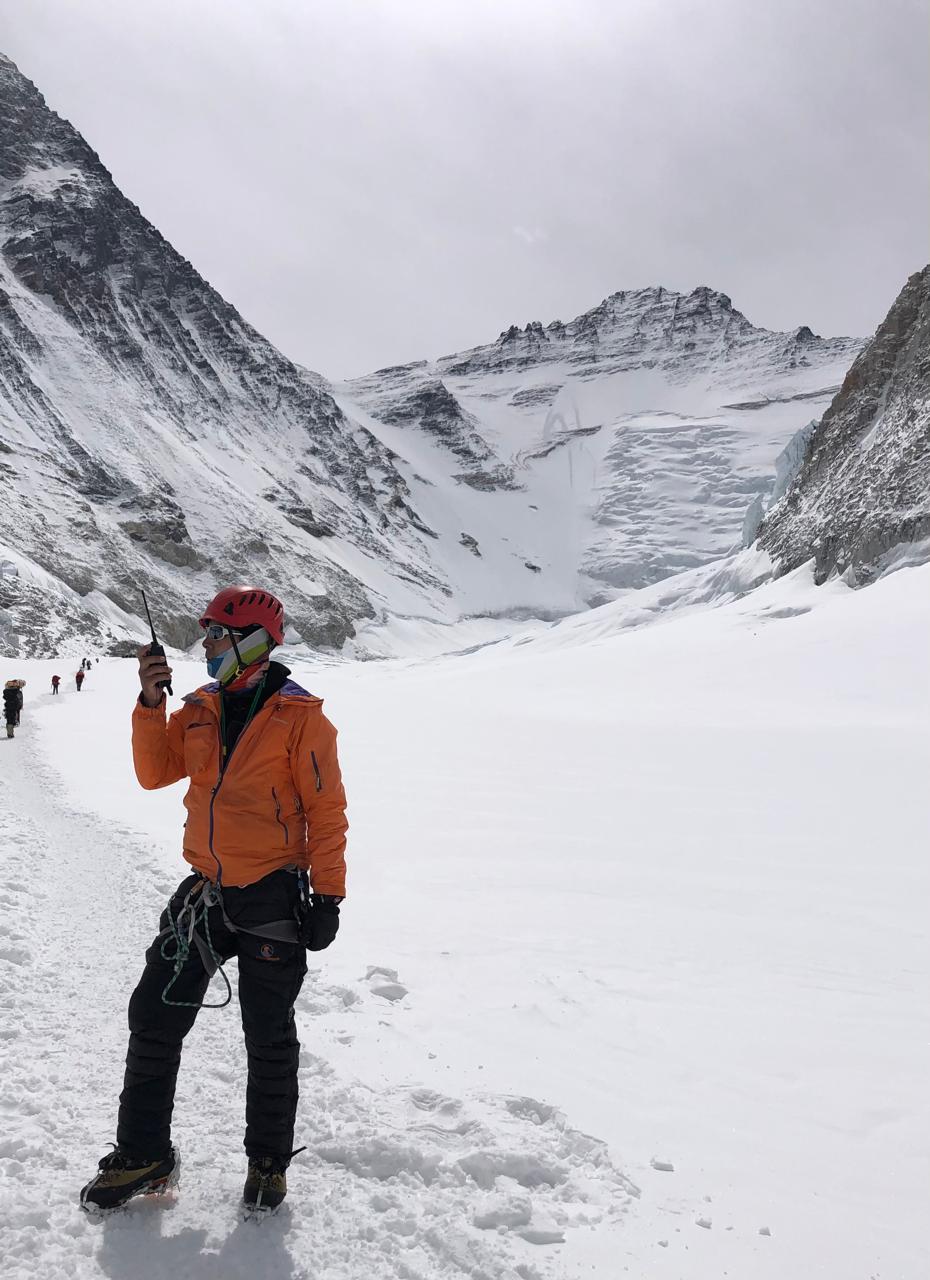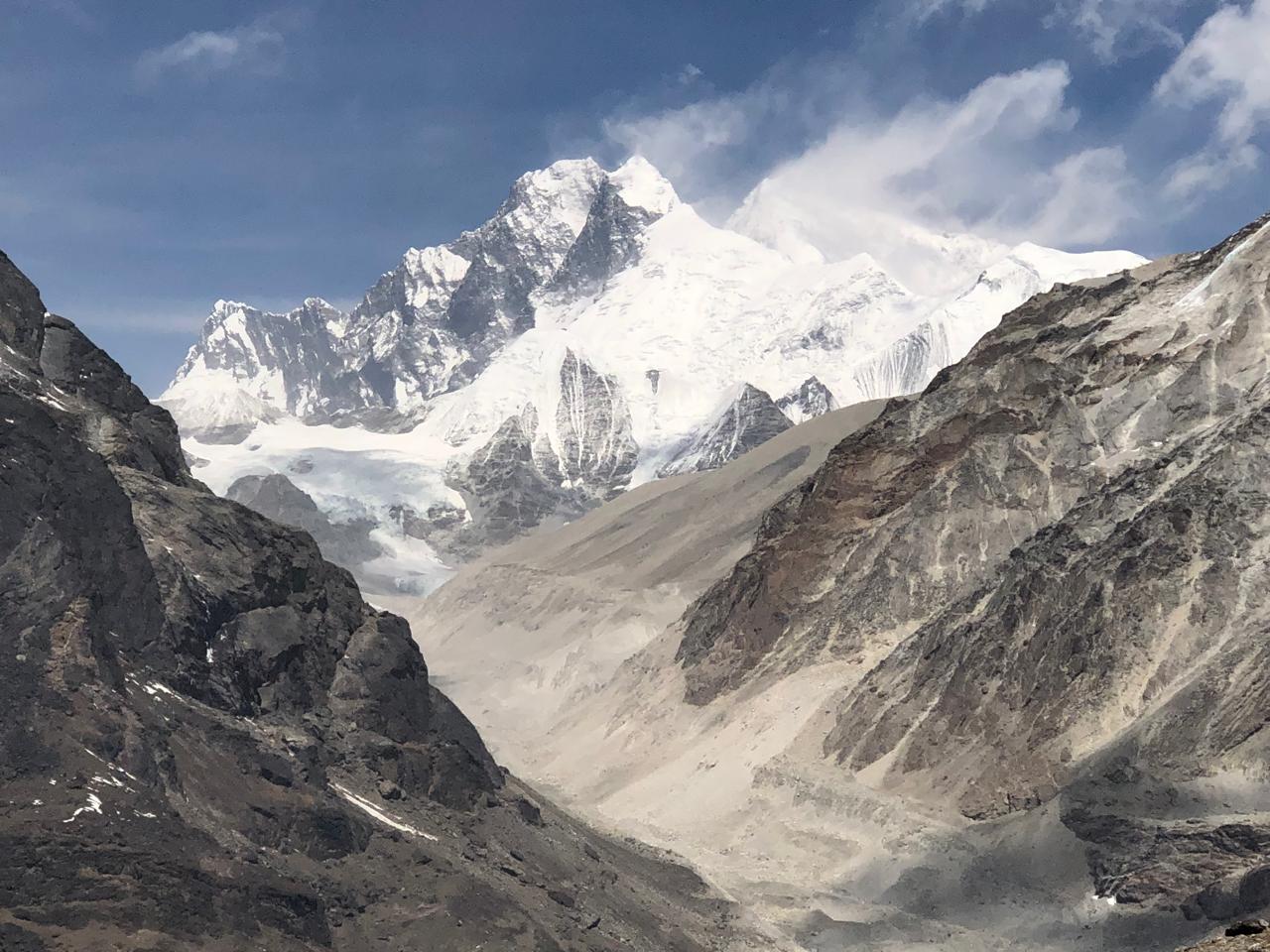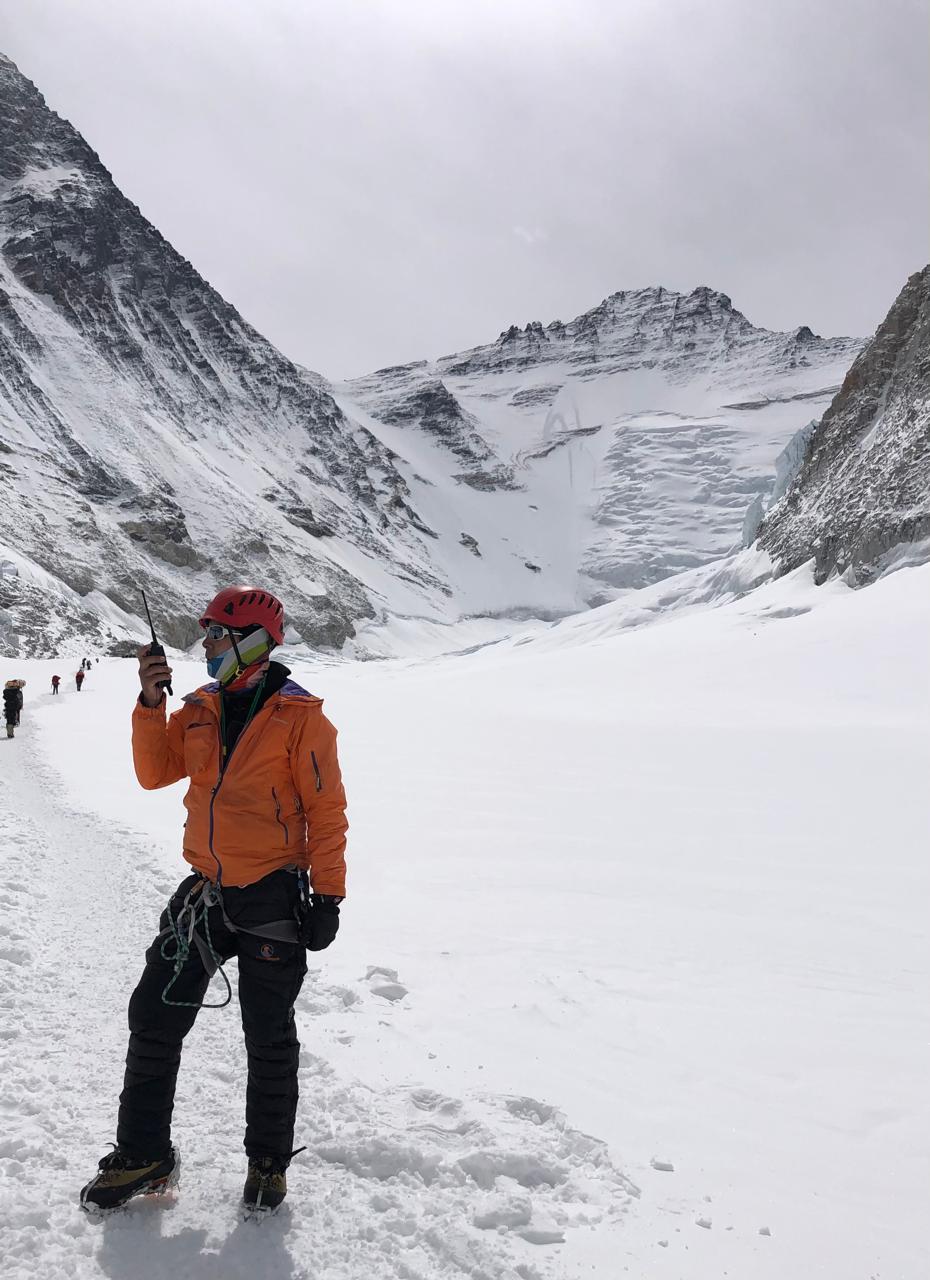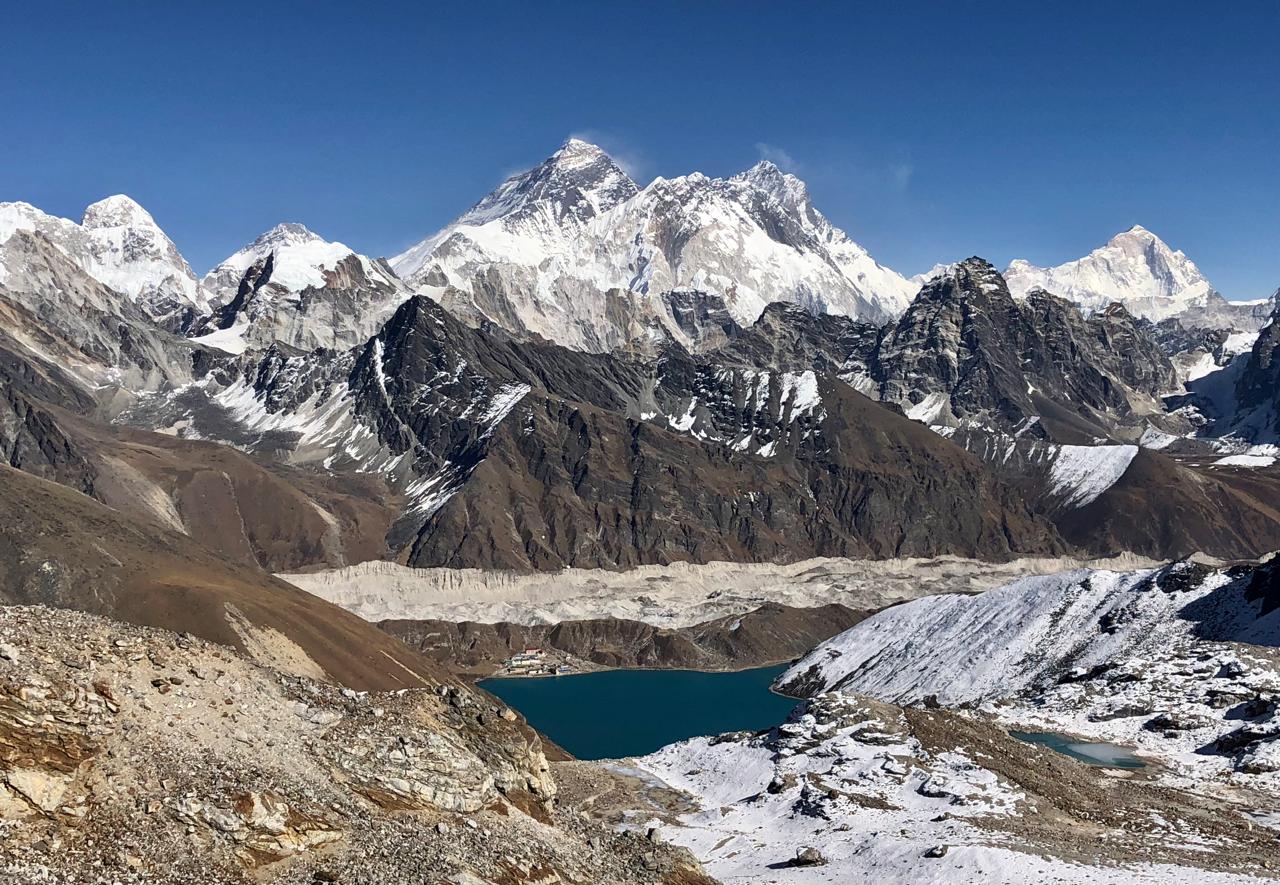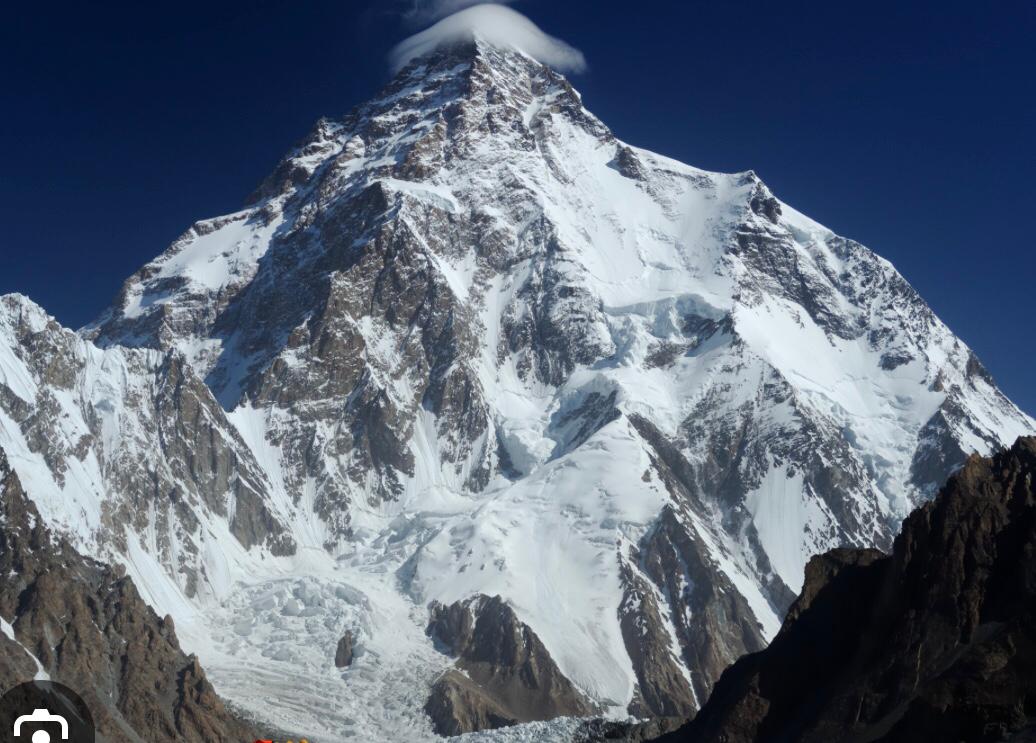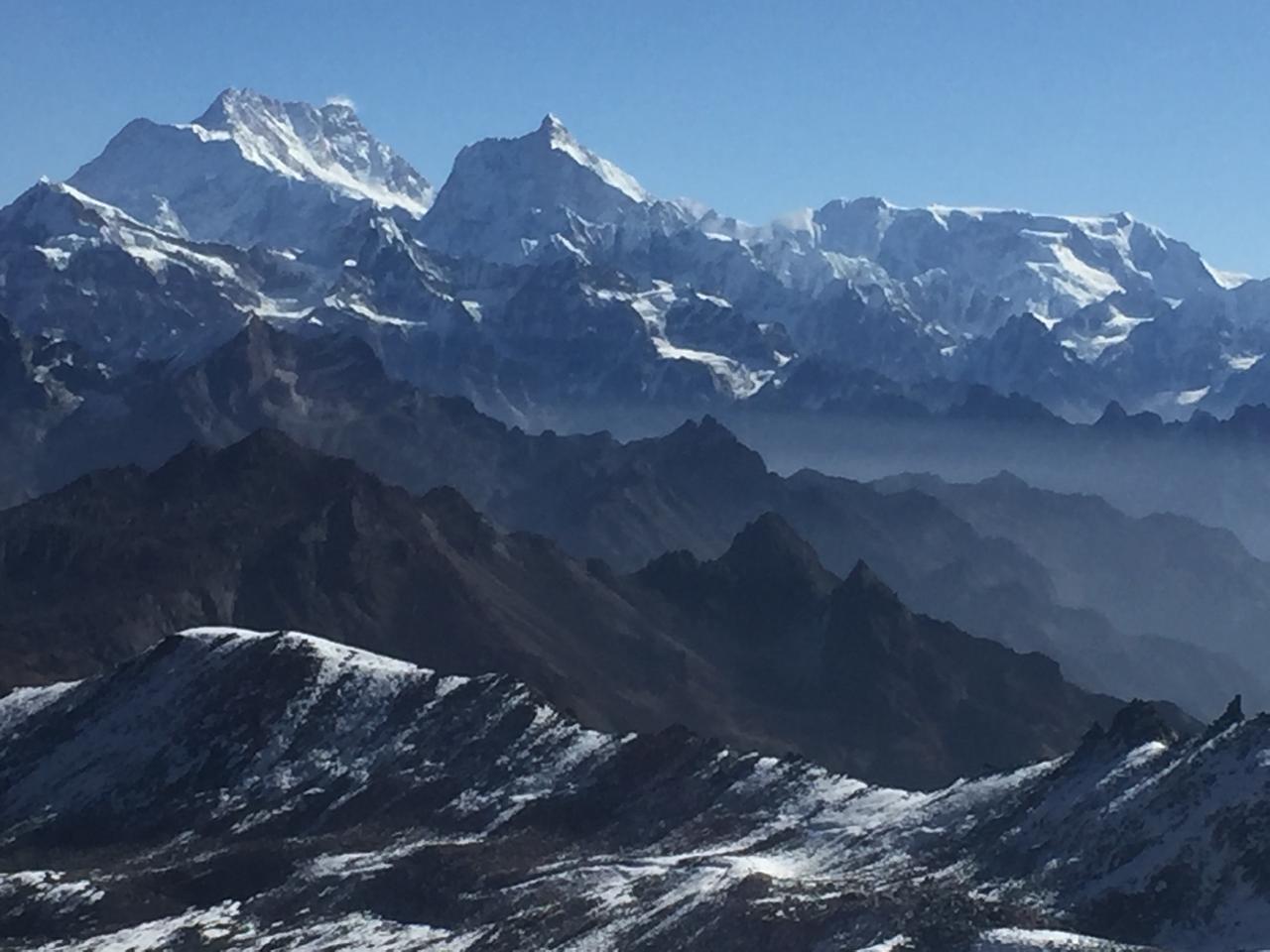Mt. Lhotse, also known as the "South Peak," is the fourth-highest mountain in the world, standing tall at an elevation of 8,516 meters. It forms part of the Everest massif and is located just south of Mount Everest, with which it shares much of its route. Lhotse has three main summits: the primary peak at 8,516m, Lhotse Middle (East) at 8,414m, and Lhotse Shar at 8,383m. Due to its close proximity to Everest, climbers attempting Everest via the standard southeast ridge spend a portion of their ascent on Lhotse’s northwest face.
Lhotse is unique among the world’s 8,000-meter peaks because it has the smallest topographic prominence, only 610 meters, making it closely associated with Everest. However, it is equally known for its dramatic and imposing South Face, which has gained fame for being one of the steepest and most difficult mountain walls to climb. Rising 3.2 kilometers vertically within a horizontal distance of just 2.25 kilometers, the South Face is a near-vertical wall of rock, ice, and snow and represents one of the most extreme challenges in high-altitude mountaineering.
Climbing Lhotse presents a highly technical and demanding mountaineering experience. The standard ascent route follows the same initial path as Everest’s southern route, passing through the Khumbu Icefall and the Western Cwm, before diverging at Camp 3 towards the Lhotse Face and finally the summit via the Lhotse Couloir. This narrow gully, which leads to the final summit ridge, requires climbers to have advanced climbing skills and familiarity with ice and mixed terrain.
Due to the extreme altitude and hostile environment, acclimatization is critical. Most expeditions to Lhotse involve establishing multiple camps above base camp, using supplemental oxygen above 7,000 meters, and fixing ropes to navigate through dangerous crevasses and steep faces. The weather in the region is notoriously unpredictable, with frequent high winds, snowstorms, and avalanche risk, all of which add to the challenge of a successful summit attempt.
Sherpas play a crucial role in the success and safety of every Lhotse expedition. Their experience and endurance are indispensable for setting up camps, fixing ropes, and carrying loads through the treacherous terrain. Ultimately, a successful climb of Lhotse requires a combination of physical endurance, mental resilience, technical climbing skills, and precise planning. It remains one of the most respected and awe-inspiring climbs in the world of high-altitude mountaineering.
Trip Notes:
Best Time to Visit:
-
Spring (April-May): Best weather conditions for trekking and climbing.
-
Autumn (September-November): Another optimal window with favorable weather and clear skies.
Expedition Highlights:
-
Lhotse Base Camp (5,200 m): The starting point of the expedition, offering spectacular views of Everest and the Khumbu Icefall.
-
Tengboche Monastery: A spiritual site with breathtaking views of Everest, Lhotse, and Ama Dablam.
-
Namche Bazaar: A vibrant Sherpa village serving as the main hub of the Khumbu region.
-
High-altitude Climbing: Ascend through glaciers, icefalls, and steep ridges, navigating the Lhotse Couloir to the summit.
Climbing Route:
-
The South Face Route is the most common route, following the same path as the Everest Southeast Ridge route up to Camp 3 before diverging toward the Lhotse Couloir.
-
The climb involves steep ascents, technical ice and rock climbing, and exposure to extreme weather conditions.
Difficulty Level:
-
This is an extremely challenging expedition requiring prior high-altitude mountaineering experience.
-
Not suitable for beginners or those without prior experience in 8000 m+ climbs.
Key Challenges:
-
Altitude & Acclimatization: Proper acclimatization is crucial to prevent altitude sickness.
-
Extreme Cold & Weather Conditions: Sudden weather changes, including high winds, snowfall, and avalanches, are common.
-
Lhotse Couloir: A steep, narrow gully of ice and rock requiring technical climbing skills.
-
Death Zone (Above 8,000m): Low oxygen levels increase the risk of frostbite, exhaustion, and altitude sickness.
Training & Preparation:
-
Physical Fitness: A high level of endurance, strength, and cardiovascular fitness is essential.
-
Climbing Skills: Experience with ice climbing, glacier travel, crevasse rescue, and fixed-line ascents is required.
-
Altitude Training: Acclimatization climbs on peaks above 6,000m are recommended before attempting Lhotse.
Safety Considerations:
-
Avalanches & Rockfall: The Lhotse Face is prone to avalanches and falling ice.
-
Summit Push: The final ascent through the Lhotse Couloir is physically demanding and requires strategic oxygen use.
-
Climbing Equipment: Essential gear includes high-altitude boots, crampons, harnesses, ice axes, helmets, sleeping bags, and oxygen tanks.
Permits Required:
-
Sagarmatha National Park Permit: Required for all trekkers and climbers in the region.
-
Mount Lhotse Climbing Permit: Issued by the Nepalese government.
-
TIMS (Trekkers’ Information Management System) Card: Required for tracking trekkers’ safety.
Important Notes:
-
Physical Fitness & Experience: A strong mental attitude, technical skills, and excellent endurance are necessary.
-
Weather & Conditions: Conditions in the Himalayas are unpredictable; flexibility in the itinerary is essential.
Summit Timeframe: The best summit windows typically occur between late April to early May or late September to November.
